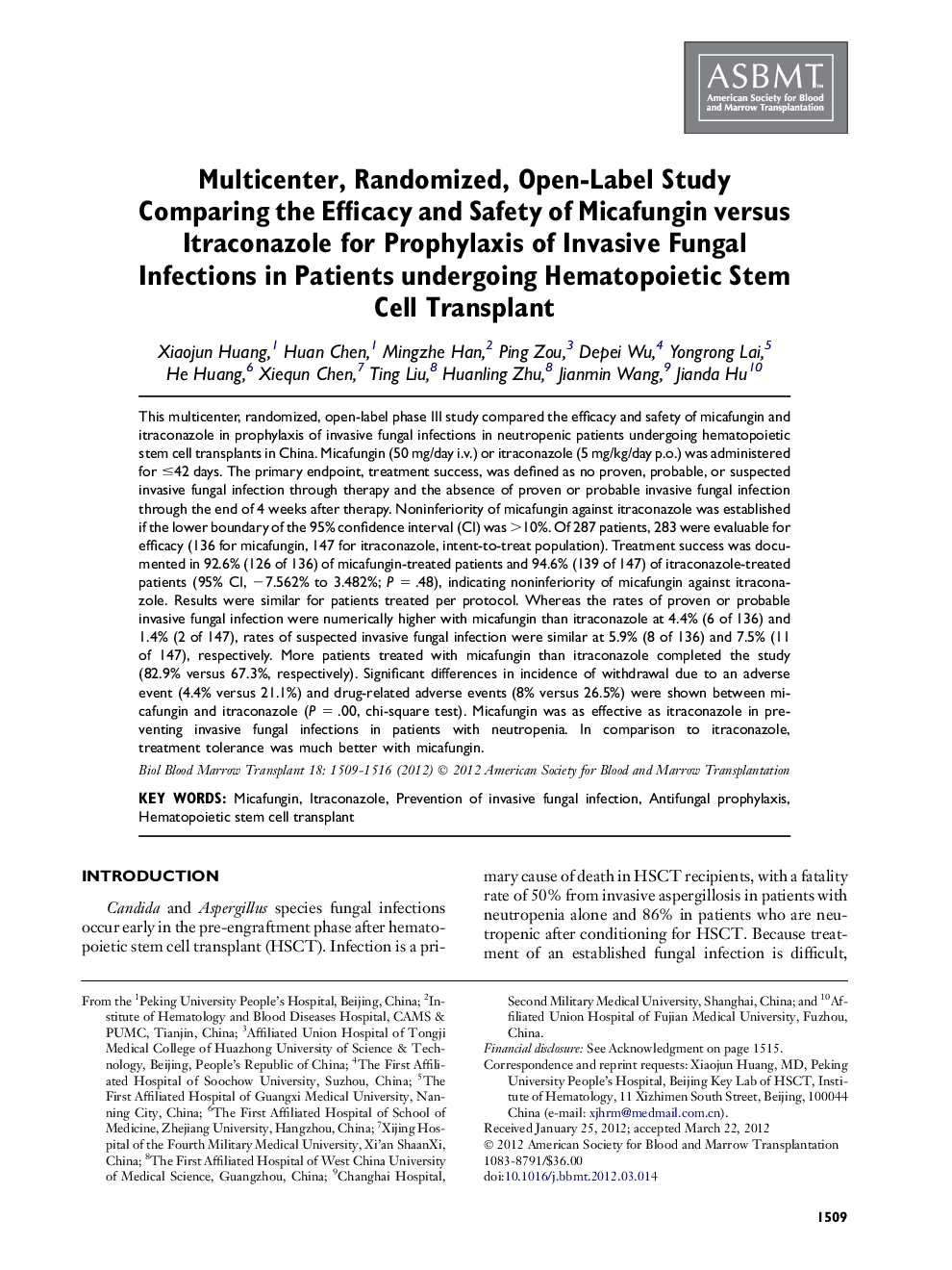| Article ID | Journal | Published Year | Pages | File Type |
|---|---|---|---|---|
| 2102610 | Biology of Blood and Marrow Transplantation | 2012 | 8 Pages |
This multicenter, randomized, open-label phase III study compared the efficacy and safety of micafungin and itraconazole in prophylaxis of invasive fungal infections in neutropenic patients undergoing hematopoietic stem cell transplants in China. Micafungin (50 mg/day i.v.) or itraconazole (5 mg/kg/day p.o.) was administered for ≤42 days. The primary endpoint, treatment success, was defined as no proven, probable, or suspected invasive fungal infection through therapy and the absence of proven or probable invasive fungal infection through the end of 4 weeks after therapy. Noninferiority of micafungin against itraconazole was established if the lower boundary of the 95% confidence interval (CI) was >10%. Of 287 patients, 283 were evaluable for efficacy (136 for micafungin, 147 for itraconazole, intent-to-treat population). Treatment success was documented in 92.6% (126 of 136) of micafungin-treated patients and 94.6% (139 of 147) of itraconazole-treated patients (95% CI, −7.562% to 3.482%; P = .48), indicating noninferiority of micafungin against itraconazole. Results were similar for patients treated per protocol. Whereas the rates of proven or probable invasive fungal infection were numerically higher with micafungin than itraconazole at 4.4% (6 of 136) and 1.4% (2 of 147), rates of suspected invasive fungal infection were similar at 5.9% (8 of 136) and 7.5% (11 of 147), respectively. More patients treated with micafungin than itraconazole completed the study (82.9% versus 67.3%, respectively). Significant differences in incidence of withdrawal due to an adverse event (4.4% versus 21.1%) and drug-related adverse events (8% versus 26.5%) were shown between micafungin and itraconazole (P = .00, chi-square test). Micafungin was as effective as itraconazole in preventing invasive fungal infections in patients with neutropenia. In comparison to itraconazole, treatment tolerance was much better with micafungin.
